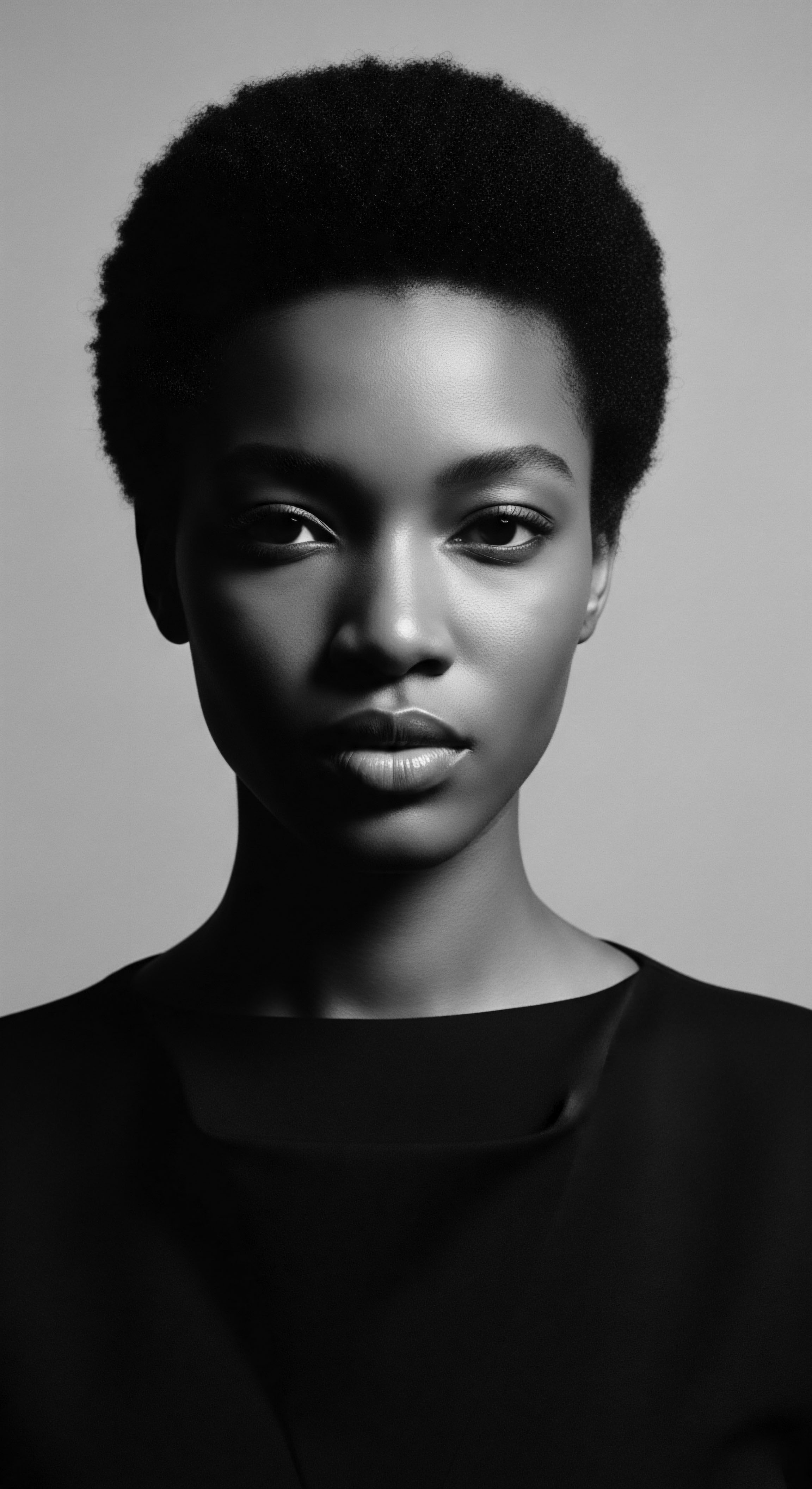
Roots
The story of Afro-textured hair, a living testament to resilience and artistry, is deeply intertwined with the decrees of power, the silent dictates of societal norms, and the indomitable spirit of heritage. From ancient communal rituals that honored coils as sacred antennas, linking earthly existence to ancestral wisdom, to the stark pronouncements of colonial powers seeking to control and diminish, laws have cast long shadows upon the perception of Black and mixed-race hair. It is a narrative not of simple restrictions, but of a profound spiritual and cultural battle, where the very biology of a strand became a canvas for oppression, and conversely, a vibrant symbol of defiance.
This journey begins with the very essence of the hair itself, its unique helical structure, its profound biological design that cradles moisture and boasts strength, often misunderstood or, worse, deliberately maligned by legislated mandates. Before the chains of transatlantic trade tightened around West African communities, hair was a revered aspect of identity, a visual language speaking volumes about lineage, marital status, social standing, and spiritual connection. Communities honored hair as a living entity, its care a tender, communal act, each coil a whisper from the source. The influence of historical laws, therefore, marks a stark departure from this ancestral reverence, seeking to unravel not just styles, but the very selfhood woven into each strand.
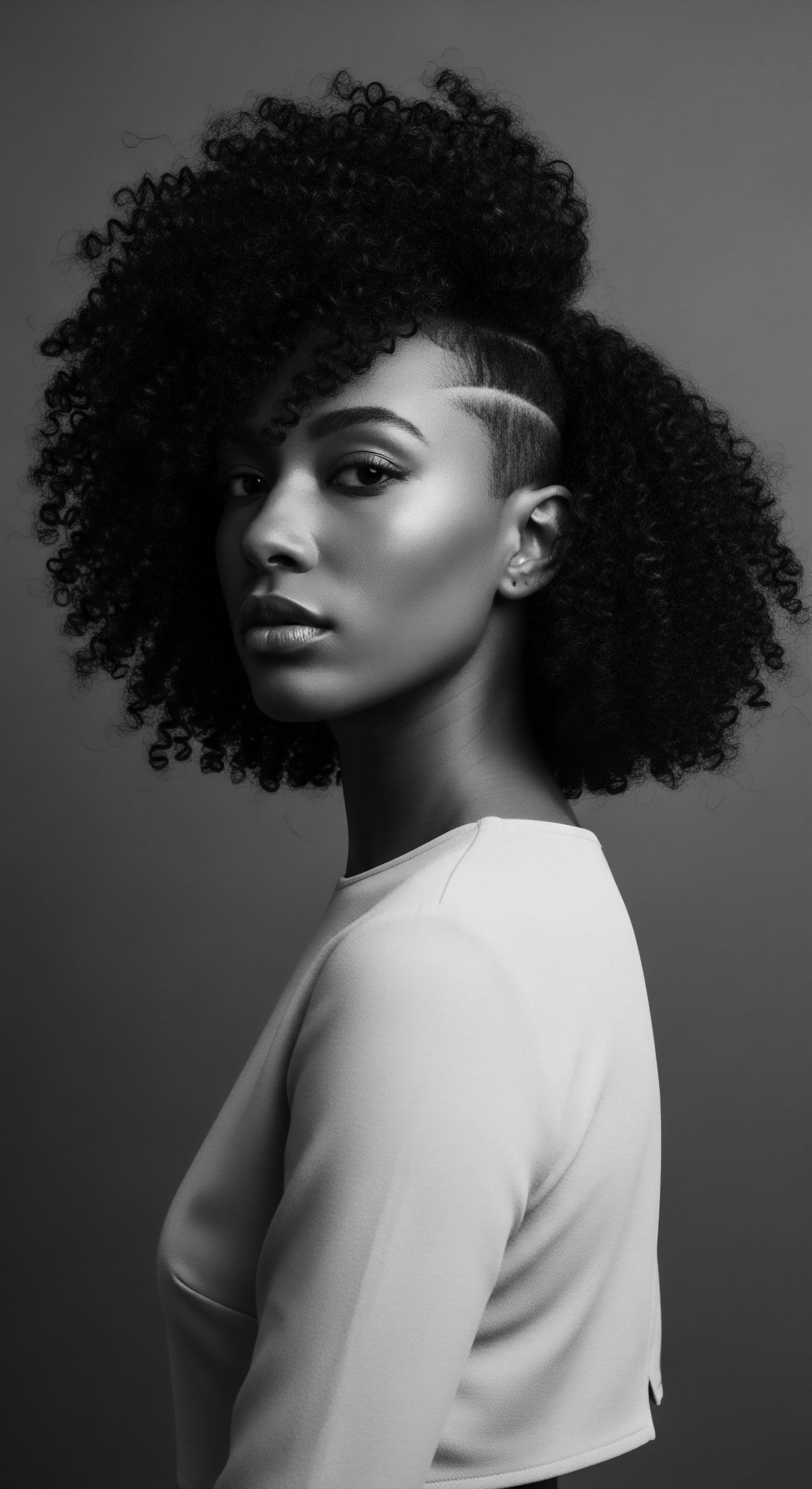
Hair Anatomy and the Ancestral View
The fundamental understanding of Afro-textured hair, a marvel of biological engineering, stands in powerful contrast to the derogatory labels it acquired through legislated prejudice. Unlike straight or wavy hair, each strand of Afro-textured hair emerges from its follicle with a distinct elliptical cross-section, forming a tight, often spiraling curl pattern. This inherent coiling, while granting extraordinary volume and protective capabilities, also creates points of vulnerability along the strand where the cuticle layers can lift, leading to increased porosity and a propensity for dryness. Ancestrally, this unique structure was not a flaw but a feature, well-suited to diverse African climates, and its care was integrated into daily life with specialized oils, butters, and grooming methods passed down through generations.
Consider how the laws attempted to redefine this natural state. Slave codes, for instance, often mandated the shaving or covering of hair, literally obscuring this biological signature. This practice aimed to strip individuals of their pre-colonial identities, severing a visible connection to their homeland and traditions.
The psychological impact extended beyond aesthetics, challenging the ancestral reverence for hair as a source of personal power and a link to the divine. When laws forced women to cover their coiled crowns, they also sought to stifle the deep-seated spiritual and communal bond tied to visible hair styling and maintenance, a practice that affirmed identity.

Hair Classification and Cultural Echoes
Modern hair classification systems, while ostensibly scientific, often carry an unspoken historical baggage, their very genesis influenced by Eurocentric beauty standards that were once enforced by law. The Andre Walker Hair Typing System, for instance, categorizes hair from 1 (straight) to 4 (coily), with sub-types (A, B, C) further describing curl tightness. While useful for product formulation today, such systems inadvertently echo a historical hierarchy where tighter coils (e.g.
4C) were historically devalued compared to looser textures, a perception deeply rooted in colonial-era designations of “good” versus “bad” hair (Tangle Teezer, n.d.). These arbitrary distinctions, once bolstered by social codes and, at times, legal mandates, created internal divisions within Black communities, impacting self-perception and beauty ideals for generations.
One striking example of this legal imposition is the Tignon Law of 1786 in New Orleans. Enacted by Spanish Governor Esteban Rodríguez Miró, this law compelled free women of color to wear a tignon, a headscarf, over their hair. The intention was clear ❉ to visibly mark them as belonging to the “slave class,” regardless of their free status, and to diminish their perceived attractiveness to white men. “The Tignon Law was a 1786 law enacted by the Spanish Governor of Louisiana Esteban Rodríguez Miró that forced black women to wear a tignon headscarf.”.
The decree stipulated that “the Negras Mulatas, y quarteronas can no longer have feathers nor jewelry in their hair. must wear plain (Ilanos) or wear panuelos, if they are of higher status, as they have been accustomed to.”. This was not a scientific classification, but a social one, legislated to enforce a racial hierarchy and control outward expressions of identity and prosperity. Despite this oppressive intent, these women transformed the tignon into a powerful statement of style and defiance, using luxurious fabrics and elaborate tying techniques to express their inherent beauty and cultural pride (VICE, 2018).
Historical laws often sought to strip Afro-textured hair of its inherent dignity, yet communities transformed these impositions into symbols of enduring heritage.

An Essential Lexicon and Forced Silences
The language we use to describe textured hair today, while increasingly celebratory, bears the faint scars of historical laws and societal pressures that aimed to control its perception. Terms like “nappy,” “kinky,” or “unmanageable,” once used as derogatory descriptors, reflect the influence of a system that deemed Afro-textured hair “unprofessional” or “bad” if it did not conform to Eurocentric standards (NYC.gov, n.d.). Legal prohibitions in workplaces or schools often utilized vague language around “neatness” or “professionalism,” effectively targeting natural Black hairstyles without explicit racial mention.
The silencing of traditional terms and grooming practices began with the forced removal from ancestral lands. African linguistic traditions held rich vocabularies for various hair types, styles, and their meanings, often tied to spiritual beliefs, social status, and communal rituals (Afriklens, 2024). The transatlantic journey, marked by forced head shaving, served as a symbolic erasure, not only of physical styles but of the very language used to affirm hair’s significance (Odele Beauty, 2021). These early acts of dehumanization, effectively legal through the institution of slavery, laid the groundwork for centuries of attempts to control Black hair, dictating acceptable appearances through informal social pressures and, later, formal workplace and school policies.

Ritual
The historical laws that sought to diminish Afro-textured hair did not merely impose restrictions; they collided with deep-rooted traditions of styling and adornment, forcing communities to adapt, resist, and innovate. These acts of legislation, whether direct mandates or insidious social codes, transformed the intimate rituals of hair care and styling into potent expressions of defiance and heritage preservation. What once flourished openly as a cultural art form, signifying everything from age to tribal affiliation, was pushed into the shadows of resilience, yet never extinguished.
From the intricate braids of pre-colonial West Africa that served as social markers and even maps for freedom, to the forced head coverings of enslaved women, the story of Black hair styling under legal duress is one of persistent creativity. Even when laws dictated suppression, the spirit of ancestral artistry found ways to bloom, turning mandates of inferiority into declarations of cultural pride.

Protective Styling Through Oppression
The practice of protective styling, so vital to the health and longevity of Afro-textured hair today, carries a profound historical weight, its roots often extending back to periods where laws directly influenced hair choices. During the transatlantic slave trade, the horrific act of shaving captives’ heads upon arrival in the Americas was a deliberate strategy to strip them of their identity and connection to ancestral lands (Library of Congress, n.d.). With traditional tools and materials lost, enslaved Africans were forced to adapt their hair practices to survive the brutal conditions of forced labor.
Styles like cornrows, while serving practical purposes in the fields, also became covert forms of resistance. Enslaved women would sometimes braid seeds into their hair to ensure survival or create intricate patterns that served as maps for escape routes, silently defying their captors’ control (BLAM UK CIC, 2022).
The Tignon Laws in 18th-century New Orleans exemplify how protective styling became a symbol of defiance. Governor Miró’s decree, intended to humble free women of color by forcing them to cover their elaborate hairstyles, unintentionally spurred an even more powerful cultural statement. These women responded not by abandoning their aesthetic, but by turning the mandated headscarf – the tignon – into a vibrant canvas.
They utilized luxurious fabrics, often adorned with jewels and feathers, tying them with such artistry that the tignon transformed from a badge of subservience into a striking declaration of beauty, wealth, and creativity (VICE, 2018). This act demonstrated a profound understanding of how to reclaim narrative, turning a tool of oppression into a beacon of heritage.
Forced modesty in hair became a canvas for opulent, defiant self-expression, proving that beauty could not be legislated away.
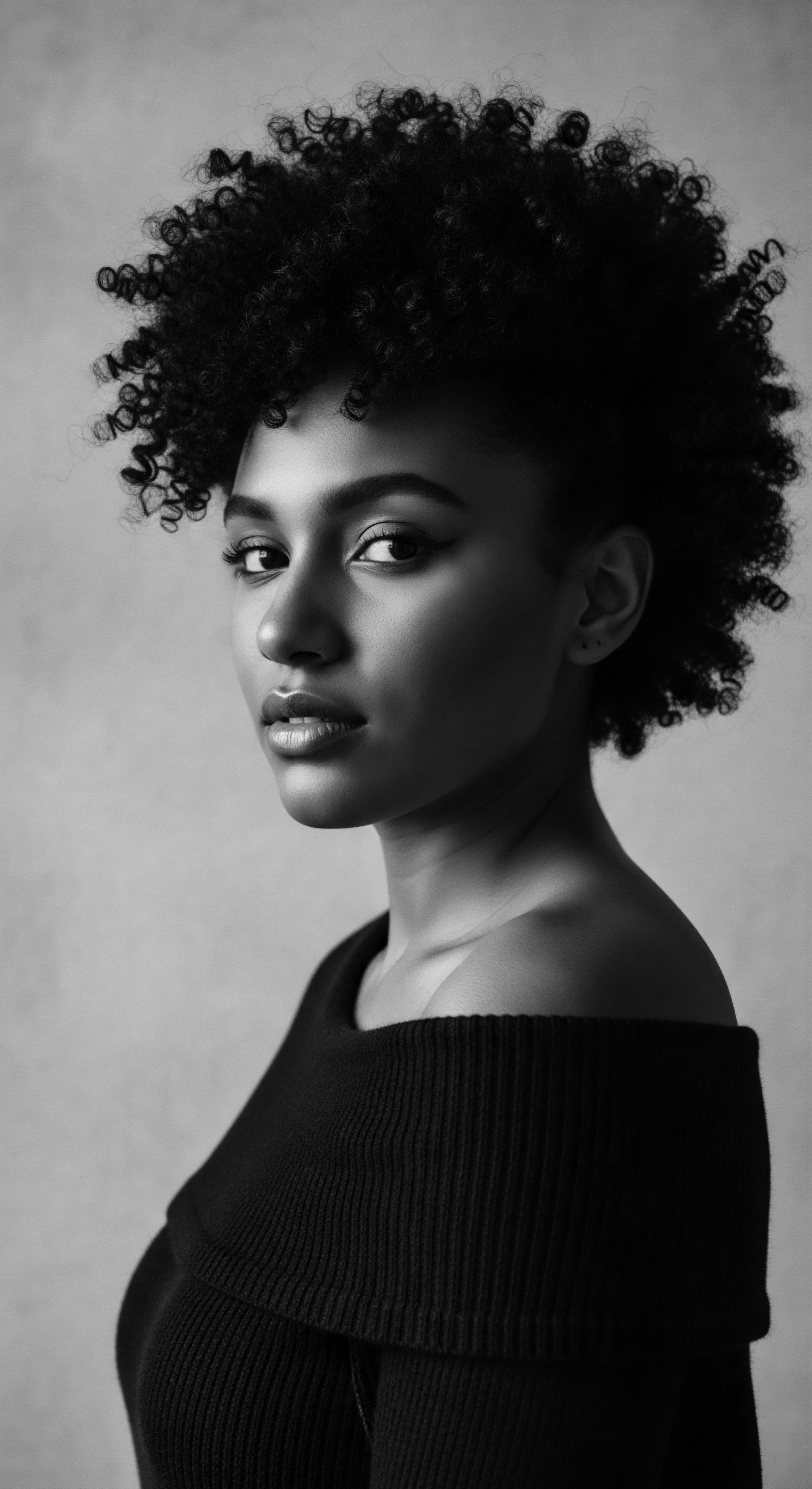
How Did Workplace Rules Influence Styling Choices?
Beyond the explicit decrees of colonial eras, the perception of Afro-textured hair in modern society has been profoundly shaped by workplace policies and legal battles over “professionalism.” For decades after slavery, and particularly into the 20th century, a tacit understanding, sometimes codified in company grooming policies, dictated that straightened hair was the acceptable standard for Black individuals seeking professional advancement (JSTOR Daily, 2019). This unwritten law, deeply internalized, compelled countless Black women to chemically relax their hair, enduring scalp burns and potential long-term damage, to conform to a Eurocentric beauty ideal. “Black women are 54% more likely to feel like they need to straighten their hair for a job interview to be successful.”.
The Rogers v. American Airlines case of 1981 stands as a stark example of this struggle. Renee Rogers, a Black flight attendant, sued American Airlines over their grooming policy which prohibited all-braided hairstyles. The court ruled against Rogers, asserting that braids were not an “immutable characteristic” of race and could be easily changed, therefore not falling under Title VII protections against racial discrimination (Justia Law, n.d.).
This ruling solidified a legal loophole that allowed discrimination against natural Black hairstyles, indirectly forcing individuals to adopt styles that did not reflect their heritage or were potentially damaging to their hair. It was a clear judicial sanction of appearance standards that disproportionately burdened Black women, influencing their styling choices and, by extension, their professional trajectories.
| Historical Directive Slave Codes Mandating head shaving or covering |
| Perceived Intent Dehumanization, erasure of identity |
| Community's Heritage Response Covert communication (braided maps), preservation of traditional care methods in secret |
| Historical Directive Tignon Laws (New Orleans, 1786) requiring head coverings for free women of color |
| Perceived Intent To signify lower status, suppress perceived attractiveness |
| Community's Heritage Response Elevated headwrap artistry with luxurious fabrics and adornments, transforming the symbol of oppression into one of distinction and resistance |
| Historical Directive Workplace/Military Grooming Policies deeming natural Afro-textured styles "unprofessional" |
| Perceived Intent To enforce Eurocentric uniformity and "order" |
| Community's Heritage Response Increased reliance on chemical straightening; later, the "natural hair movement" as a reclamation of identity and cultural pride, leading to the CROWN Act |
| Historical Directive These directives illustrate a consistent pattern of control, met with enduring cultural resistance and the reclamation of hair as a symbol of identity. |
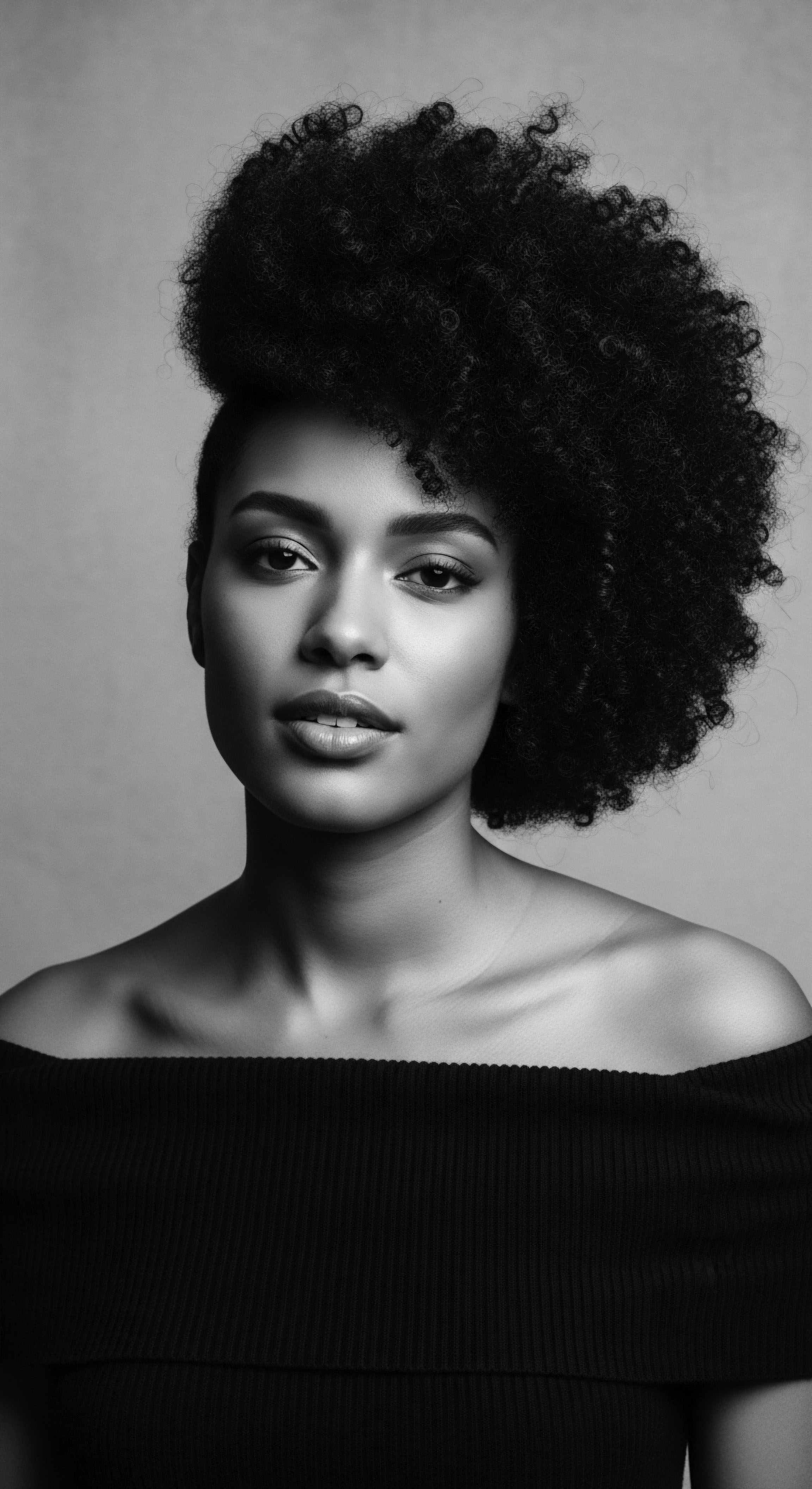
Tools and the Reshaping of Traditions
The tools of hair care and styling have also mirrored the influence of historical laws and societal pressures. Prior to forced displacement, African communities employed a variety of tools crafted from natural materials ❉ carved wooden combs, bone pins, and plant-based adornments (Kroeshaar, 2014). These tools were central to communal grooming rituals and the creation of intricate, culturally significant styles. With enslavement and the subsequent legal and social pressures to conform, the tools of choice shifted dramatically.
The hot comb, for instance, became a prevalent tool, its invention serving the purpose of straightening coiled hair to mimic European textures (Odele Beauty, 2021). This tool, while offering a means to navigate a hostile social landscape, also symbolized the coercive power of beauty standards imposed by historical injustices.
The cultural toolkit expanded to include chemical relaxers, a direct response to the legal and social mandates that discriminated against natural Afro-textured hair. The widespread adoption of relaxers, often causing scalp damage and breakage, underscored the profound pressure Black individuals faced to alter their inherent hair patterns for social and economic acceptance (NYC.gov, n.d.). Only in recent decades, with the rise of the natural hair movement and legislative protections like the CROWN Act, has the toolkit truly begun to diversify and return to honoring the natural versatility of Afro-textured hair, celebrating tools that support its coiled integrity rather than forcing its alteration.

Relay
The legacy of historical laws, even those long abolished, continues to echo through the contemporary practices of textured hair care, informing regimens, nighttime rituals, and problem-solving approaches. The conscious choice to honor and maintain natural Afro-textured hair today is a powerful testament to generations who resisted legislative and societal pressures to conform. This enduring spirit, passed down through familial lines and communal wisdom, forms a profound link between ancestral practices and modern wellness philosophies. It is a dialogue between the past’s burdens and the present’s liberation, shaping how we nourish, protect, and celebrate our crowns.
The journey of Afro-textured hair is not merely a tale of survival; it is a relay race of resilience, where each generation carried the baton of heritage, adapting and innovating care practices to thrive despite the systemic efforts to suppress its natural form. The choices made in the quietude of one’s home, the products selected, the protective measures taken—all carry the weight and wisdom of those who came before, reminding us that care is a radical act of self-preservation and cultural affirmation.
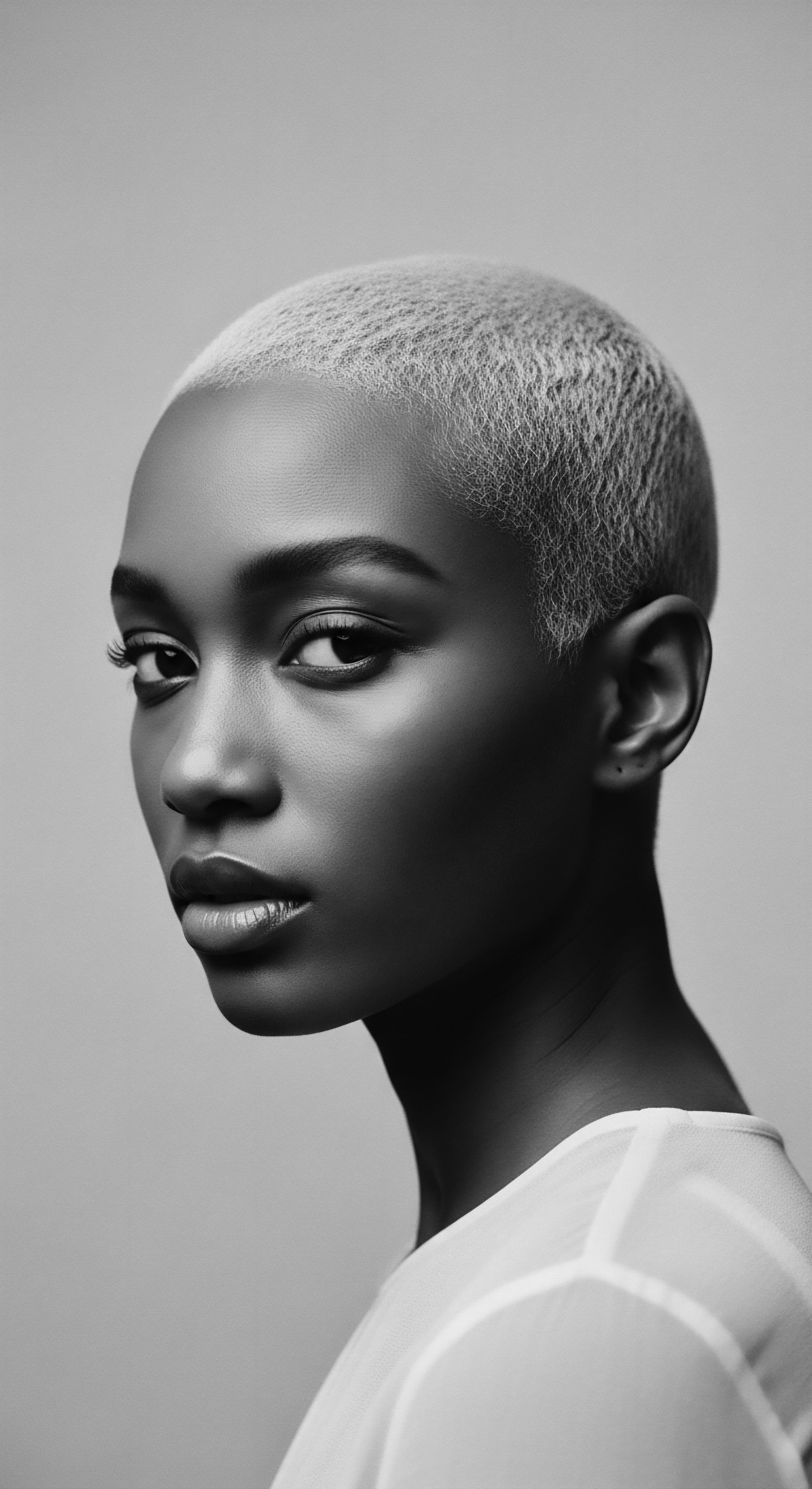
Building Personalized Regimens Rooted in Ancestral Wisdom
The creation of personalized textured hair regimens today draws deeply from a wellspring of ancestral knowledge, often in direct opposition to the uniform standards imposed by historical laws. Before the transatlantic disruption, African communities developed sophisticated hair care systems that were specific to individual hair types, climate conditions, and communal needs (Substack, 2025). These practices included the use of natural oils, butters, and herbs, applied with intention and understanding of hair’s unique properties. The imposition of laws and social norms that denigrated Afro-textured hair, pushing for straightening, severed many of these direct educational lineages (Érudit, n.d.).
Yet, this ancestral wisdom survived, often through oral tradition and quiet defiance. Modern natural hair movements, propelled by a desire to reclaim identity and challenge Eurocentric beauty ideals, have seen a resurgence of interest in these traditional ingredients and methods. For example, the use of shea butter, coconut oil, and various herbal rinses, long a part of African hair care, is now widely practiced. This return to natural practices is a deliberate rejection of the chemical processes that dominated for decades, a direct response to the implicit and explicit legal pressures that made natural hair a liability in professional and public spaces (NYC.gov, n.d.).
The CROWN Act, enacted in various states, represents a crucial legal shift, providing a shield against discrimination and allowing for the open celebration of diverse natural hairstyles (Economic Policy Institute, 2023). As of July 2024, 25 out of 50 U.S. states have passed legislation prohibiting hair discrimination (GovDocs, n.d.). This legal progress directly supports the modern revival of regimens that align with ancestral care.
- Shea Butter ❉ Revered for centuries across West Africa, this emollient balm from the shea tree deeply moisturizes and protects hair, a practice passed through generations despite attempts to erase traditional knowledge.
- Coconut Oil ❉ A staple in many diasporic communities, its fatty acids help hair retain moisture, a simple yet effective ancestral remedy that stood against the tide of chemical alteration.
- Aloe Vera ❉ Used for scalp health and conditioning in ancient African societies, this plant’s soothing properties continue to be valued in modern natural hair regimens, connecting current care to deep historical roots.

Nighttime Sanctuary and Bonnet Wisdom
The ritual of nighttime hair protection, particularly the use of bonnets and head coverings, holds layers of historical significance shaped by the very laws and social norms that sought to control Black women’s appearance. During slavery, headwraps were often mandated by slave owners, ostensibly for hygiene or to obscure the intricate, culturally rich hairstyles of enslaved women, forcing them into a perceived position of subservience (Sonson, 2021). This act, intended to diminish, inadvertently birthed a practical and symbolic tradition.
However, even within this oppressive context, the headwrap acquired paradoxical meanings. Enslaved women used them not only for protection from labor’s rigors but also as a quiet act of self-expression, incorporating vibrant colors and tying techniques that conveyed defiance or communicated secret messages (Art, Design, and Visual Thinking, n.d.). After emancipation, the headwrap persisted, sometimes linked to domestic labor, yet also serving as a “uniform of communal identity” and “a helmet of courage” (Art, Design, and Visual Thinking, n.d.). Today, the satin or silk bonnet, a direct descendant of these historical head coverings, represents a conscious choice for hair health, protecting delicate coils from friction and moisture loss overnight.
This daily ritual is a testament to the adaptive resilience of Black communities, transforming a symbol of historical oppression into a tool of modern hair wellness and cultural pride. It is a quiet, yet powerful, daily act of reclaiming autonomy over one’s body and heritage, a whisper of historical defiance in every gentle fold.
The daily bonnet ritual, seemingly simple, is a profound echo of historical resilience, transforming imposed coverings into intentional acts of self-care.
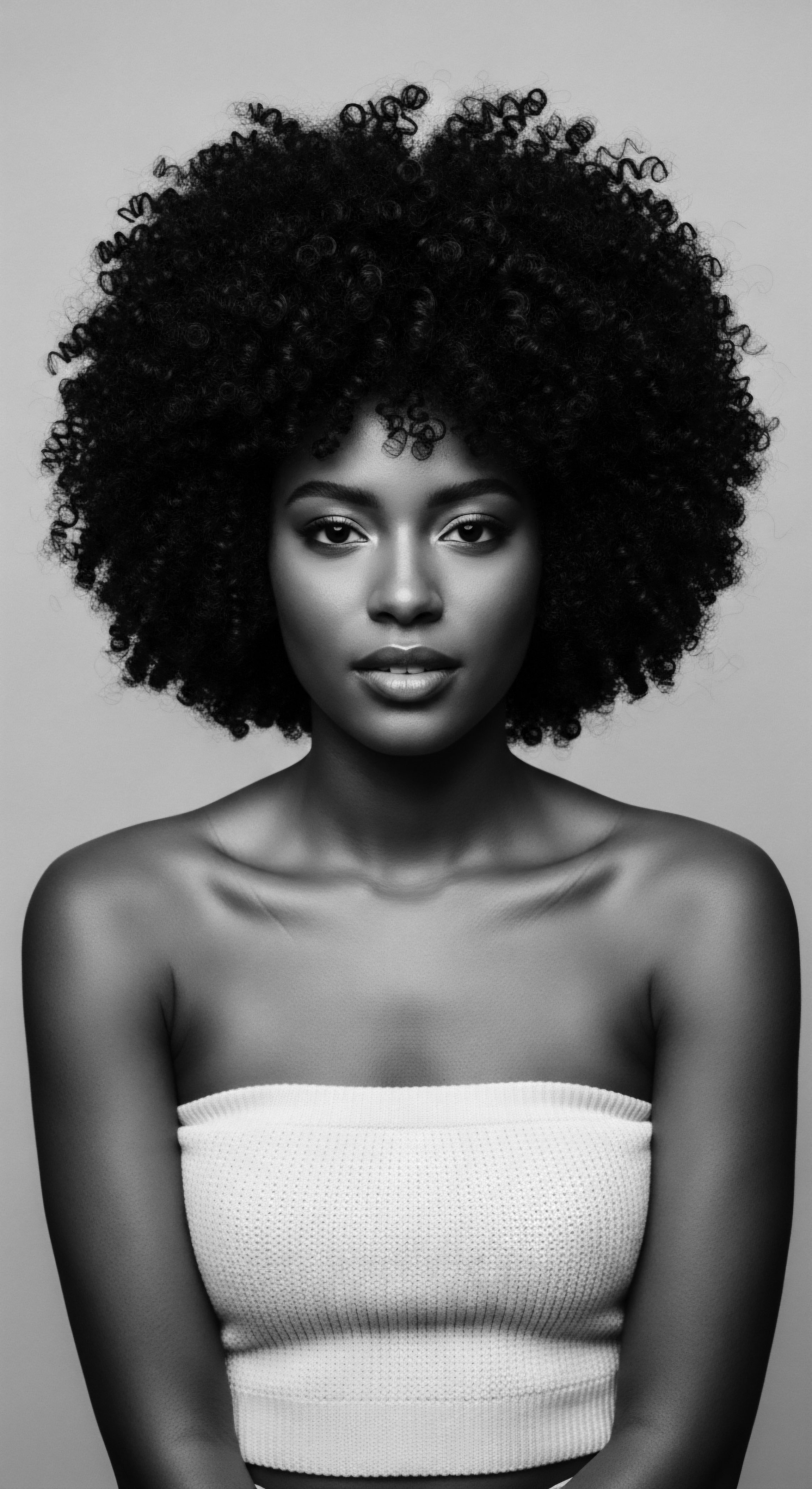
Addressing Hair Concerns Through a Heritage Lens
Problem-solving for Afro-textured hair concerns—such as dryness, breakage, or scalp conditions—is intrinsically tied to understanding the historical context in which these issues were either exacerbated or developed. Historical laws, through enforced poverty, limited access to resources, and discriminatory practices, often contributed to the physical challenges faced by Black hair. For instance, the lack of proper tools and natural ingredients during slavery led to improvisation, sometimes with harmful substances like bacon grease or kerosene used for conditioning (Scientific Research Publishing, n.d.). The widespread reliance on chemical relaxers, driven by societal pressure and discriminatory workplace policies, also led to conditions like traction alopecia and trichorrhexis nodosa, disproportionately affecting Black women (NYC.gov, n.d.).
Our approach to problem-solving now, particularly through a heritage lens, involves recognizing these historical impacts. It means understanding that certain hair challenges are not inherent flaws of Afro-textured hair, but rather consequences of systemic oppression and the forced adoption of practices contrary to its biological needs. The solution, therefore, involves:
- Re-Engaging with Ancestral Ingredients ❉ Returning to the botanical wisdom of African and diasporic communities for natural moisturizers, fortifying herbs, and soothing treatments that honor hair’s true nature. This counters the historical reliance on harsh chemical alterations.
- Prioritizing Gentle Handling ❉ Acknowledging that centuries of negative perception, often rooted in legal restrictions, led to practices that were physically damaging. Gentle detangling, protective styling, and low-manipulation techniques reflect a conscious break from this past.
- Advocating for Legal Protections ❉ Recognizing that even now, hair discrimination persists (Consumer Notice, n.d.). Laws like the CROWN Act are vital in creating environments where individuals can wear their natural hair without fear of professional or social penalty, thus addressing the root cause of many historically-induced hair problems.
By understanding the lineage of these challenges, from the Tignon Laws to the Rogers v. American Airlines decision, we can approach hair wellness not just as cosmetic care but as an act of historical reclamation and collective healing. This holistic view acknowledges the deep connections between legal history, societal perception, and the physical manifestations of hair health, fostering true radiance from the roots outward.
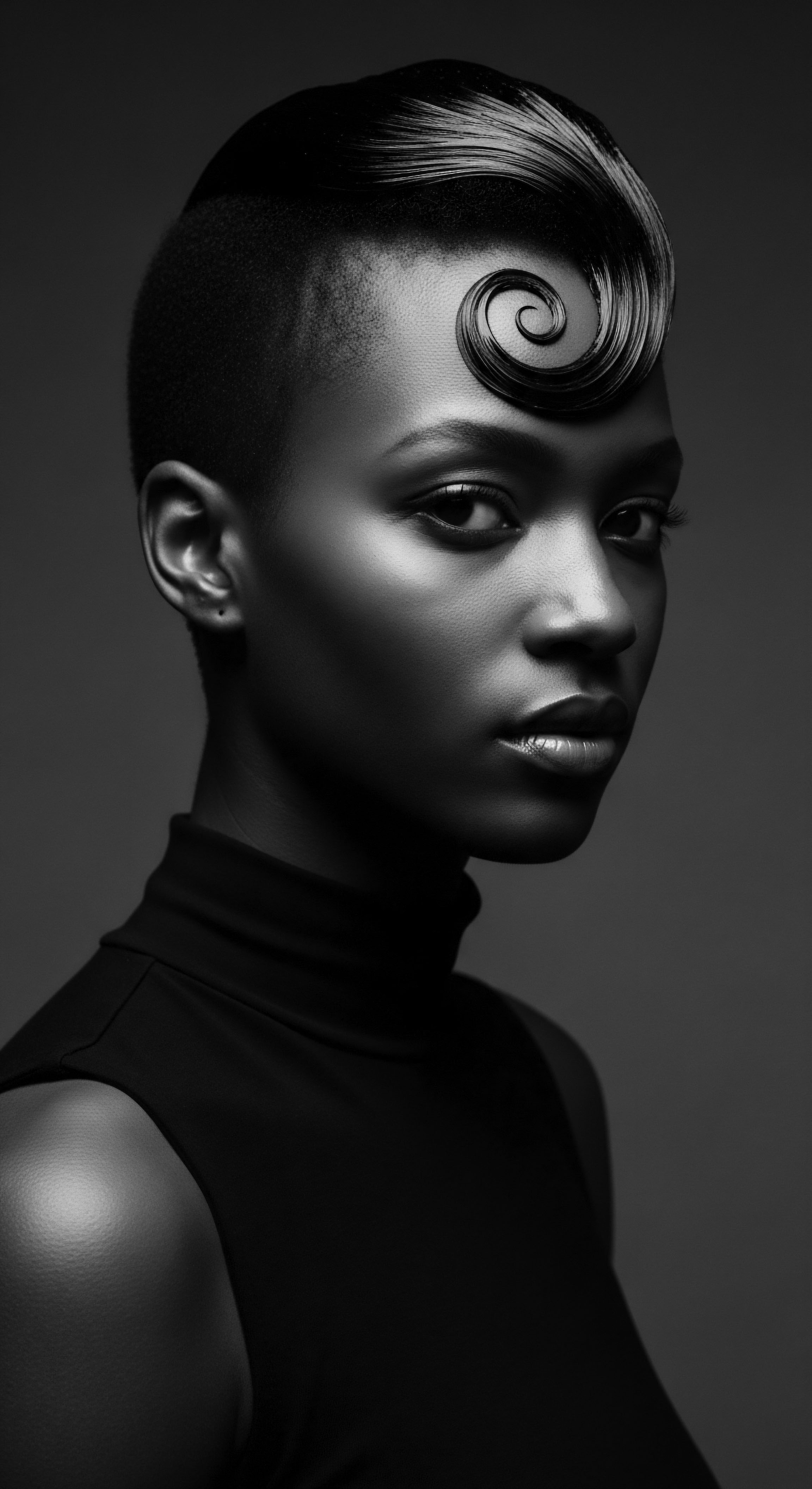
Relay
The enduring influence of historical laws on the perception of Afro-textured hair is a complex cultural phenomenon, a relay of impact and resistance passed through generations. We see it in the fundamental understanding of textured hair’s very biology, in the evolution of styling practices, and in the holistic approach to its care. This is not a simple linear progression, but a continuous interplay, where past decrees inform present realities and inspire future pathways toward self-determination and reverence for heritage. The legal landscape, once a tool of subjugation, is slowly but certainly transforming into an avenue for affirmation, reinforcing the profound connection between identity, hair, and the collective memory of a people.
Our exploration reveals that the battle for hair acceptance has always been part of a broader struggle for human dignity. The intricate coiling of a strand, once deemed “unruly” by legislation, stands today as a symbol of strength and beauty, a living archive of resilience.

Examining the Interplay of Law and Biology
The very language of historical laws, when applied to Afro-textured hair, often betrayed a fundamental misunderstanding, or a deliberate misrepresentation, of its biological characteristics. Terms like “nappy” or “kinky,” frequently invoked in discriminatory policies, ignored the inherent qualities that make textured hair unique. Scientifically, the elliptical cross-section of Afro-textured hair and its varied curl patterns contribute to its strength and ability to form intricate, long-lasting styles without excessive manipulation, while also presenting challenges such as dryness due to the difficulty of natural oils traveling down the spiral (Tangle Teezer, n.d.).
Laws, however, often legislated against the visible expression of these biological realities. Military regulations, for instance, historically imposed grooming standards that effectively marginalized natural Afro-textured styles by deeming them “unprofessional” or “unauthorized,” forcing Black service members to chemically alter or cut their hair (childish mane llc, 2023). A significant shift occurred in 2014 when the U.S.
Army faced fierce criticism and rolled back initial restrictions on dreadlocks and twists, acknowledging that these styles did not reflect less professionalism (Time, 2014). This institutional change, pressured by advocacy groups and Black service members, marks a crucial moment where the legal framework began to align with the biological reality and cultural significance of Afro-textured hair, moving beyond a narrow, Eurocentric definition of “neatness.” The ongoing efforts to pass federal CROWN Act legislation serve as a testament to the persistent need to codify protections for natural hair, ensuring that biological differences are not weaponized for discrimination (Legal Defense Fund, n.d.).
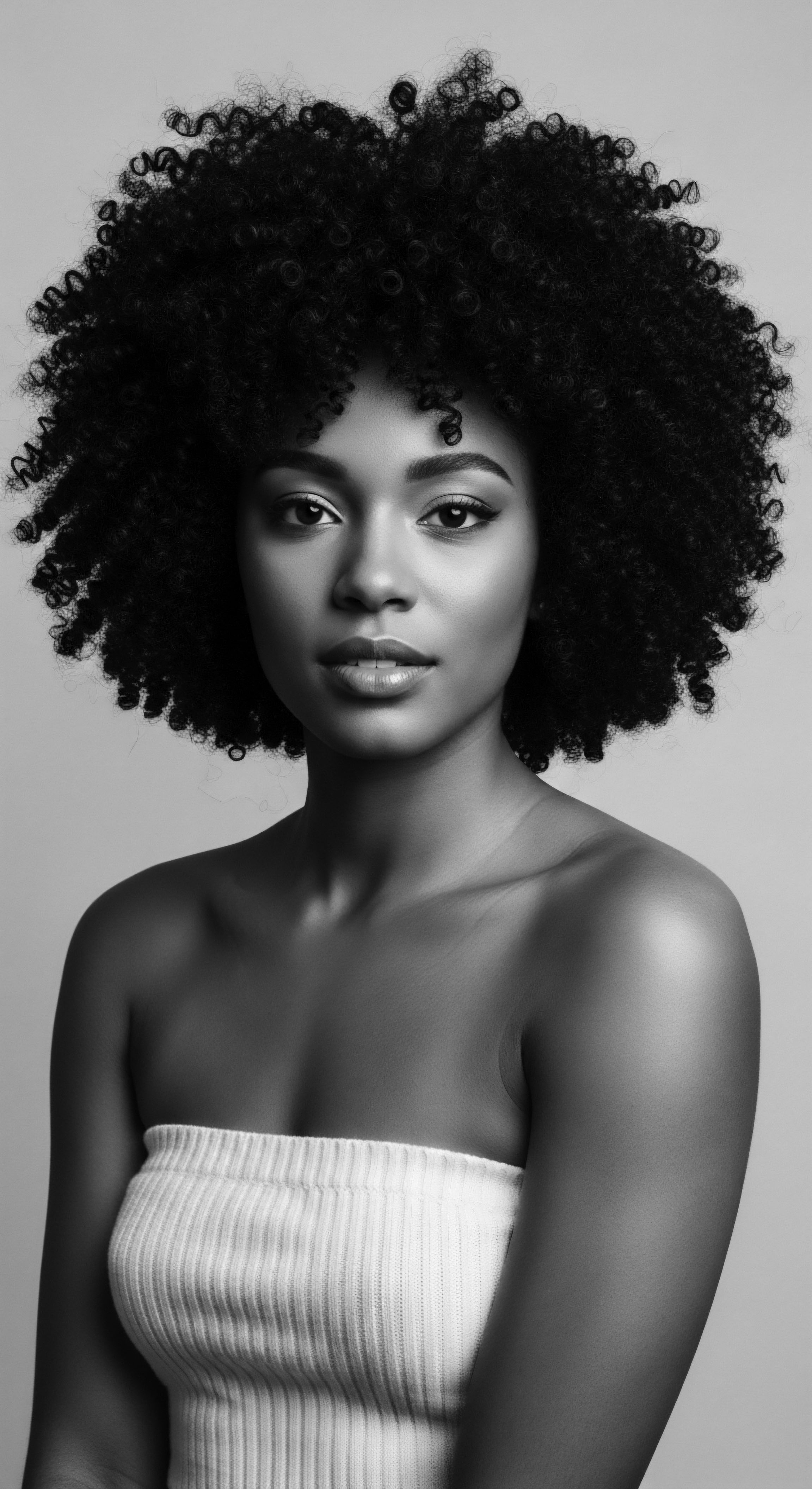
What Are the Long-Term Cultural Impacts of Hair Laws?
The echoes of historical hair laws reverberate through cultural memory, shaping collective and individual perceptions long after their official repeal. The “good hair” versus “bad hair” dichotomy, deeply rooted in the plantation hierarchy that favored lighter-skinned enslaved people with looser curl patterns for domestic work, persisted through generations, influencing self-esteem and beauty standards within Black communities (Odele Beauty, 2021). This internal bias, a direct consequence of historical oppression, meant that achieving “good” or “acceptable” hair often involved painful and damaging chemical treatments.
A 2023 CROWN Workplace Research Study found that Black women’s hair is more than twice as likely as white women’s hair to be perceived as “unprofessional,” and approximately two-thirds of Black women change their hairstyle in preparation for a job interview (Buckley Bala Wilson Mew LLP, 2024). This statistic powerfully illuminates the enduring psychological and economic consequences of historical laws and norms. Despite legal advancements like the CROWN Act, the deeply ingrained stereotypes around Afro-textured hair continue to affect opportunities and mental well-being, including changes in self-esteem and anxiety (Consumer Notice, n.d.). The cultural impact extends to the intergenerational transmission of these anxieties, where parents and children navigate a world still influenced by antiquated standards.
The ongoing natural hair movement is a powerful counter-narrative, a cultural rebellion that reclaims authenticity and challenges these lingering perceptions. It underscores that hair is not merely aesthetic; it is a profound marker of identity, history, and a continuous journey of self-acceptance.
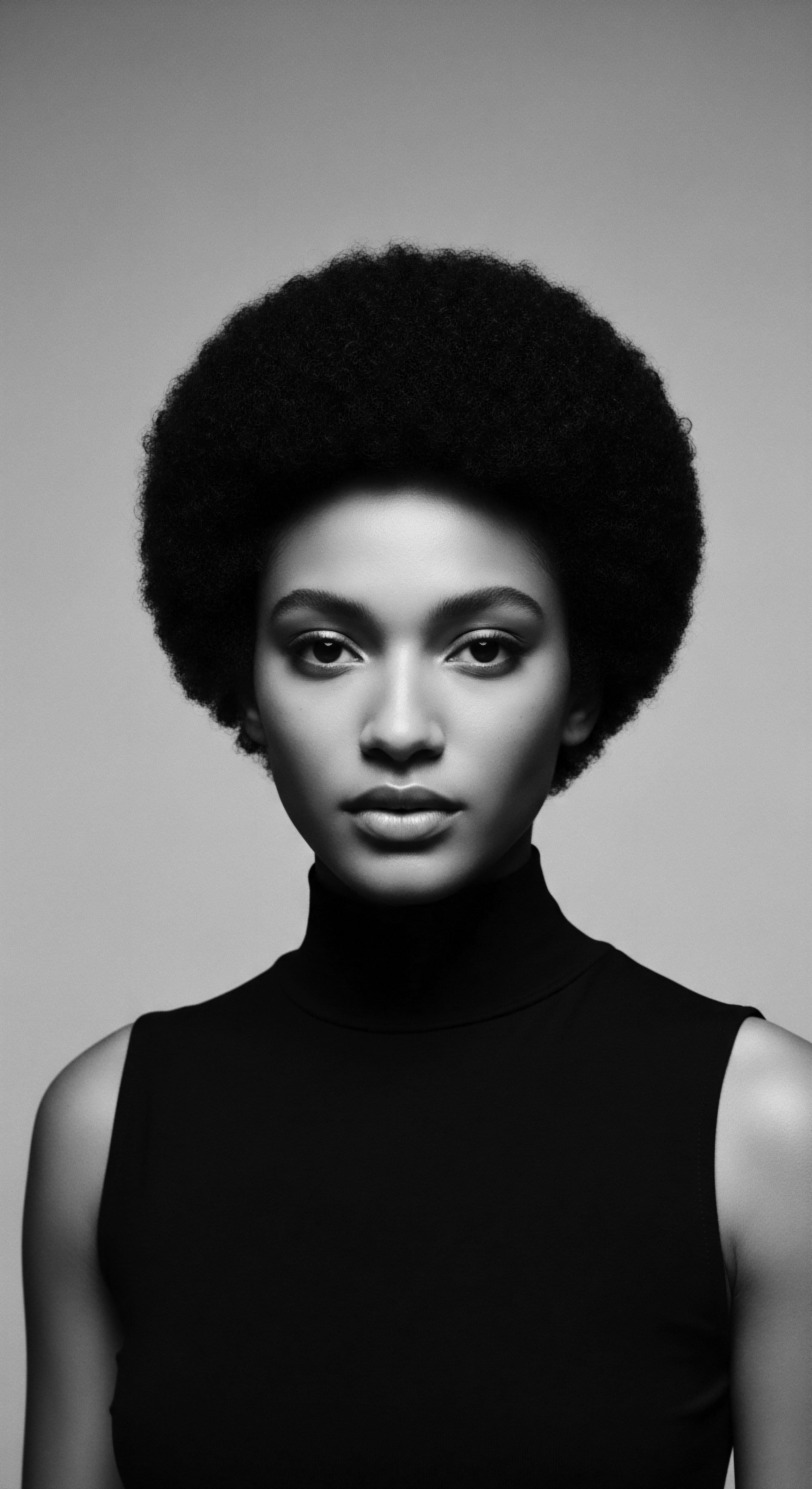
Ancestral Practices and Modern Validation
The profound wisdom embedded in ancestral hair care practices, often suppressed or deemed primitive by colonial perceptions, is now finding validation through modern scientific understanding. For centuries, African communities utilized natural ingredients like plant-based oils, clays, and herbal infusions to cleanse, condition, and protect Afro-textured hair, acknowledging its unique need for moisture and gentle handling (Substack, 2025). These practices were holistic, connecting hair health to overall well-being and spiritual alignment.
While historical laws often dismissed or actively discouraged these practices in favor of Westernized beauty standards, contemporary science now offers explanations for their efficacy. For instance, the use of protective styles like braids and twists, common in ancestral communities, is now understood to minimize manipulation, reduce breakage, and retain length, aligning perfectly with modern trichological recommendations for fragile hair types. The deliberate re-adoption of these ancestral practices by the natural hair movement represents a powerful act of decolonization.
This movement is not simply about aesthetics; it is about recognizing the scientific validity and cultural richness of practices that were historically devalued by laws and societal norms. It is a return to a heritage of wellness that views hair as a sacred extension of self, deserving of careful, informed, and culturally affirming care.
| Historical Period Pre-Colonial Africa |
| Dominant Perception (influenced by Laws/norms) Sacred, symbolic, marker of status and identity |
| Hair Care & Identity Landscape Diverse, intricate styles; communal grooming; natural ingredients and tools |
| Historical Period Slavery & Colonialism |
| Dominant Perception (influenced by Laws/norms) "Unruly," "unprofessional," "animalistic" |
| Hair Care & Identity Landscape Forced shaving/covering; "good vs. bad" hair dichotomy; shift to chemical alteration for survival; covert resistance |
| Historical Period Post-Emancipation to Mid-20th Century |
| Dominant Perception (influenced by Laws/norms) "Straight" as professional norm; natural hair as lower class |
| Hair Care & Identity Landscape Widespread chemical relaxing, hot combing; limited natural hair visibility in public/professional spheres |
| Historical Period Civil Rights to Present Day |
| Dominant Perception (influenced by Laws/norms) Reclamation of "Black is Beautiful"; legal protections against discrimination |
| Hair Care & Identity Landscape Natural hair movement flourishes; increased scientific understanding; CROWN Act and similar legislation supporting natural hair as racial identity |
| Historical Period The journey from sacred symbol to stigmatized trait, and now to a reclaimed emblem of identity, demonstrates the enduring power of heritage against legal impositions. |
The persistent struggle to define Black hair on its own terms, free from historical legal constraints and prejudiced perceptions, underscores a fundamental truth ❉ a people’s hair is inextricably bound to their dignity. The shift from laws that mandated concealment to legislation that protects expression is a profound cultural victory, a testament to the enduring spirit of textured hair heritage.

Reflection
The textured strand, in its magnificent helix, holds more than just genetic code; it holds centuries of whispers, of resilience, of ancestral memory. It bears the imprint of laws conceived to diminish, yet transcended by an unbreakable spirit. The story of how historical laws influenced the perception of Afro-textured hair is not merely a dry recitation of statutes and dates; it is a living, breathing archive of human defiance, creativity, and the enduring power of cultural heritage. Each coil, each twist, each loc carries the wisdom of those who turned mandates of inferiority into declarations of profound beauty, transforming adversity into an art form.
In the quiet rituals of care, the conscious choices made in styling, and the unwavering fight for legal recognition, we witness a continuous act of honoring what was meant to be suppressed. The journey of Afro-textured hair from a symbol targeted by oppressive decrees to a celebrated emblem of identity is a testament to its inherent strength and the deep-seated pride of those who carry its lineage. It reminds us that true understanding of hair extends far beyond its physical form; it reaches into the soul of a strand, connecting us irrevocably to a rich and vibrant heritage that defies all attempts at erasure. This heritage, passed hand to hand, through generations, remains unbound, a luminous thread weaving through time, asserting its rightful place in the tapestry of human expression.
References
- Art, Design, and Visual Thinking. (n.d.). The African American Woman’s Headwrap ❉ Unwinding the Symbols.
- BLAM UK CIC. (2022). The history of Black Hair.
- Buckley Bala Wilson Mew LLP. (2024). An Update on the CROWN Act.
- childish mane llc. (2023). Unveiling the CROWN ❉ A Journey Towards Inclusive Hair Policies for Black Women in the Military.
- Consumer Notice. (n.d.). Hair Discrimination in the Workplace ❉ How it Affects Mental Health.
- Economic Policy Institute. (2023). The CROWN Act ❉ A jewel for combating racial discrimination in the workplace and classroom.
- Érudit. (n.d.). The importance of hair in the identity of Black people.
- GovDocs. (n.d.). States with Hair Discrimination (CROWN) Laws in 2024 ❉ Interactive Map.
- JSTOR Daily. (2019). How Natural Black Hair at Work Became a Civil Rights Issue.
- Justia Law. (n.d.). Rogers v. American Airlines, Inc. 527 F. Supp. 229 (S.D.N.Y. 1981).
- Kroeshaar. (2014). The US Army, the 1st Organization to Recognize Afro Hair.
- Legal Defense Fund. (n.d.). Hair Discrimination FAQ.
- Library of Congress. (n.d.). Heavy is the Head ❉ Evolution of African Hair in America from the 17th c. to the 20th c.
- NYC.gov. (n.d.). Legal Enforcement Guidance on Race Discrimination on the Basis of Hair.
- Odele Beauty. (2021). 6 Things Everyone Should Know About Black Hair History.
- Scientific Research Publishing. (n.d.). Rhetoric of Natural Hair ❉ Cultural Contradictions.
- Sonson. (2021). The History of Headwraps and Black Culture.
- Substack. (2025). Ancestral Hair Rituals to Nourish Your Hair and Soul.
- Tangle Teezer. (n.d.). Afro-Textured Hair Discrimination.
- Time. (2014). U.S. Military Rolls Back Restrictions on Black Hairstyles.
- VICE. (2018). When Black Women Were Required By Law to Cover Their Hair.
